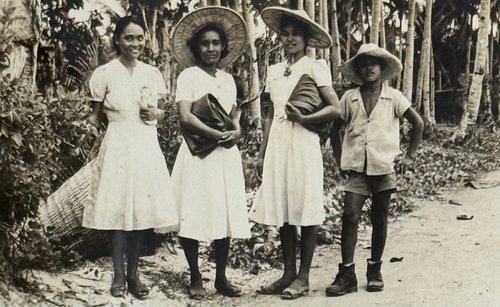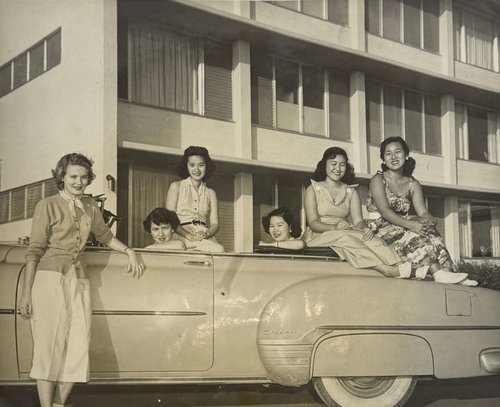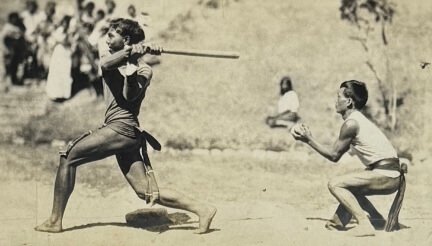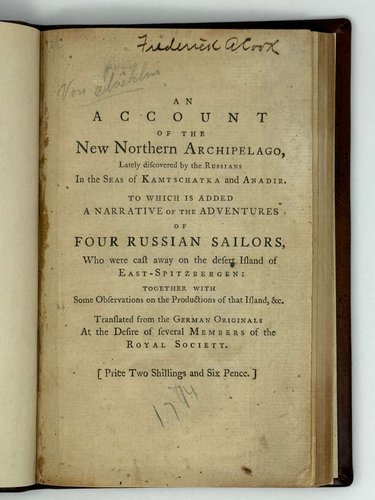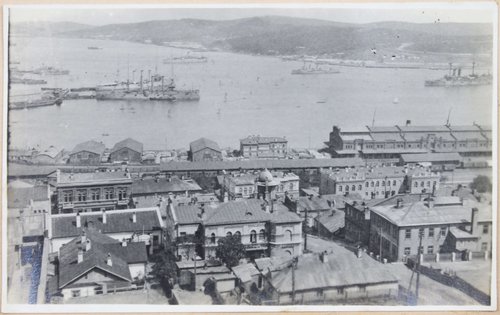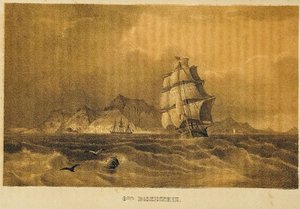
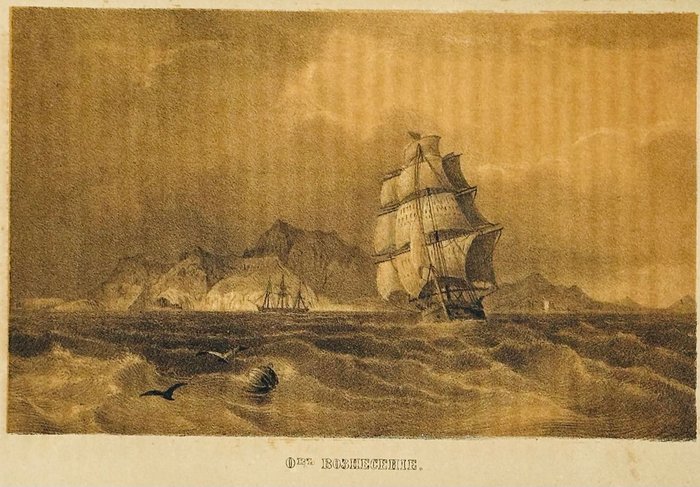
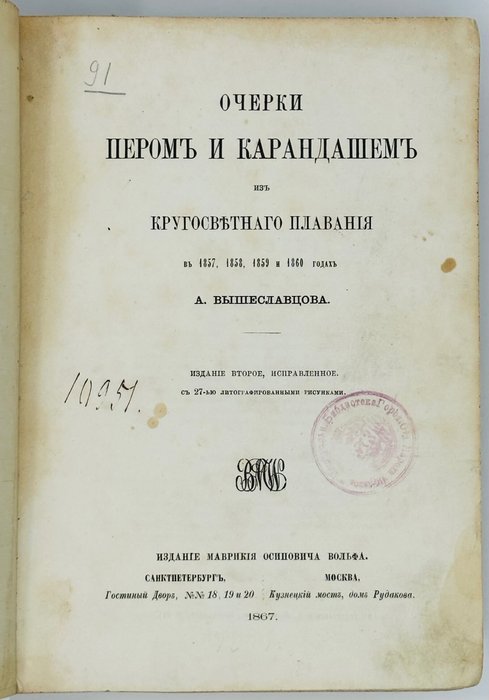
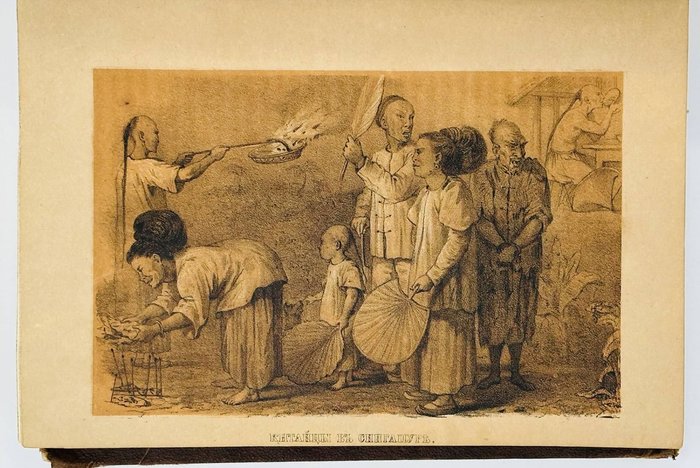

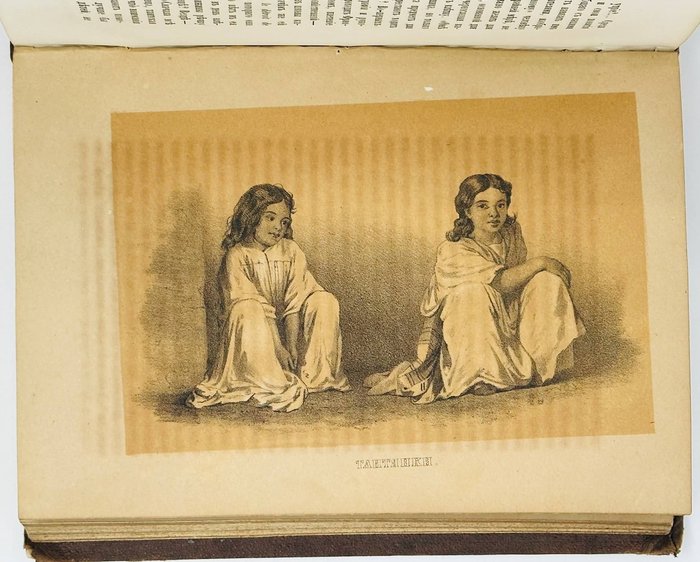

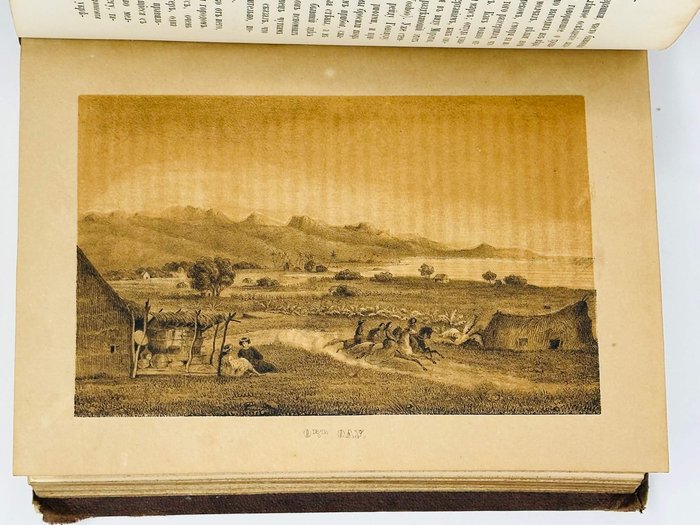
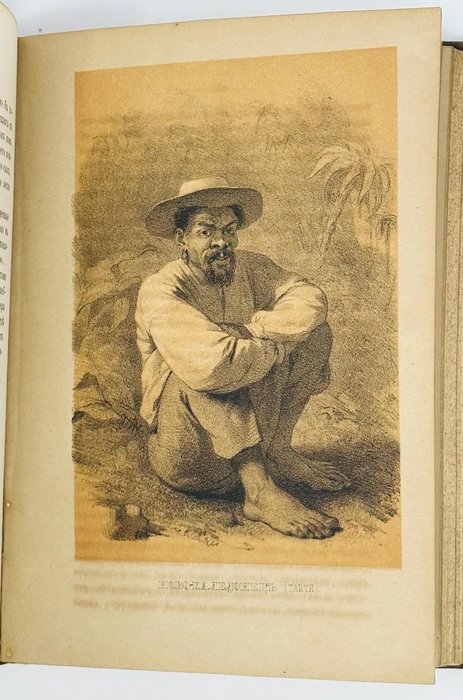
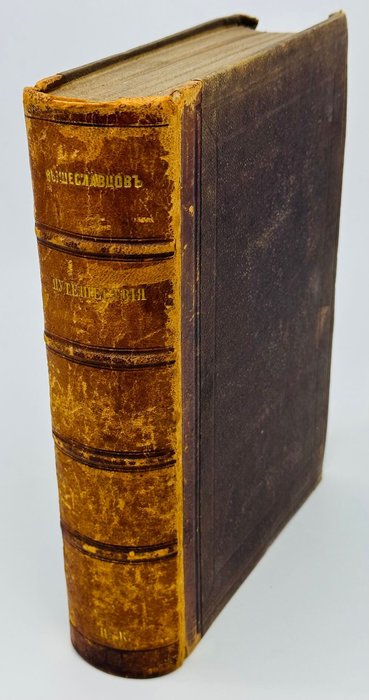
#RA35
1867
Second corrected edition. [4], iii, 592 pp. Ca. 24,5x18 cm. With a lithographed title page and twenty- three tinted lithographed plates (complete).
Faded ink Soviet library stamps on the title page, p. 17, and last page, ink stamp of "Mezhdunarodnaya Kniga" book shop on the last free endpaper.
Period Russian brown quarter sheep with cloth boards and gilt lettered title on the spine. Plates with some age toning, binding mildly rubbed on extremities, corners slightly bumped, first free endpaper slightly chipped on the upper margin, but overall a very good copy.
Rare Russian imprint with only seven paper copies found in Worldcat. Early interesting Russian circumnavigation account, with the first illustrations drawn by a Russian artist which depicted Singapore and its Chinese and East-Indian inhabitants. The book described the voyage around the world executed by a Russian naval clipper “Plastun” in 1857-1860. “Plastun” was a part of a group of Russian propeller driven naval ships which were sent to visit the newly acquired Russian territories in the Far East (annexed with the signing of the Russian- Chinese Treaty of Aigun in 1858) and to establish Russian presence in Chinese and Japanese ports. Having left Kronstadt, the ship called at the Atlantic Islands (Madeira, Tenerife, Cape Verde, Ascension Island and others), rounded Cape of Good Hope, visited Singapore, Hong Kong, several bays of the new Russian Amur region, Vladivostok and Nikolayevsk; spent almost a year in Japan, and returned to Kronstadt via Hawaii, Tahiti, Strait of Magellan, Buenos Aires and Rio de Janeiro.
The book was written by “Plastun’s” doctor Alexey Vysheslavtsev (1831-1888). Several chapters (including the essays about Cape of Good Hope, Atlantic Ocean, Hong Kong, Edo and others) were first published in the “Russky Vestnik” magazine in 1858-1860, under the general title “Letters from clipper Plastun.” Chapters 3 “The Malay Sea” and 4 “Hong Kong” describe “Plastun’s” voyage to Singapore through the Sunda Strait and Java Sea, and thence to the South-China Sea and Hong Kong. The description of Singapore where “Plastun” stayed for a week in July 1858 is one of the earliest detailed accounts of the city made by a Russian. Vysheslavtsev included a brief history of British colonisation of Singapore, wrote about its economy and trade, city structure, European, Chinese, Indian and Malay quarters, gave a vivid description of everyday life in Singapore – street traders, Chinese house boats on the river, a performance in a native Indian theatre, manners and appearance of Chinese, Indian and Malay inhabitants, including Indian jugglers (illustrated with his original drawings reproduced in the book); noted about the monument to Sir Stamford Raffles which was under renovation at the time of Vysheslavtsev’s visit etc. A special part is dedicated to Vysheslavtsev’s visit to the Whampoa estate near Singapore (modern-day Novena planning area of Singapore’s Central Region), a conversation with the estate’s founder and owner Hoo Ah Kay (1816- 1880), and a side trip to several smaller islands in the Singapore Strait. The chapter about Hong Kong talks about structure and architecture of Victoria City, sampan and junk boats, appearance and costumes of Chinese women, Hong Kong geography and unhealthy climate, history of British colonisation, local police force, frequent attempts by Chinese patriots to kill European residents (often by poisoning), street markets and traders, a dinner with the Governor of Hong Kong John Bowring in his residence (one of Bowring’s daughters told Vysheslavtsev that the whole family had just survived an attempt of poisoning); nearby Whampoa Island (near Canton) where “Plastun” underwent renovation; Chinese rice fields and agriculture; the nature of typhoons and how a ship can survive them; the latest events of the Second Opium War; the beginning of French conquest of Cochinchina; opium smoking and trade; Christian missionaries in China; etc. Chapter 7 of the account titled “The Pacific” contains a captivating description of the visit to Honolulu: city description, Diamond Hill, local society, funerals of a king’s nephew, local police, public prosecution, Waikiki village, Nuuanu Pali lookout, hula hula dance, personality of Kamehameha IV who received the officers of the Russian squadron in his palace; “Tahitian” part talks about Papeete and environs, history of discovery and colonisation of the island, king Pomare I, breadfruit trees, Papeuriri, local school, Fautaua waterfall, Moorea, introduction to the queen Pomare IV, and others.
The first edition of the book was published in 1862 by the Russian Naval Ministry which was in charge of publication of a number of important Russian expedition accounts in the 1800-1840s (voyages by Sarychev, Krusenstern and Lisyansky, Golovnin, Kotzebue, Luetke, Bellingshausen, Wrangel, and others).
Our second edition of the book was issued five years later by a major commercial Saint Petersburg publisher Mauritius Wolf, this publication included twenty-three lithographed plates (the same amount as in the Russian State Library copy) and is complete, although the title page calls for twenty-seven, like in the first edition. The completeness is confirmed by Forbes 2773. Among the illustrations are the views of Ascension Island, the Whampoa estate near Singapore, Hakodate, several bays in the Russian Far East, the Strait of Magellan, an embankment in Rio de Janeiro; portraits of the natives from the Cape of Good Hope and Singapore, Gilyaks from the Amur Region, Japanese in Edo and Hakodate, and others. The “Pacific” plates include views of the Oahu Island, Pali (Oahu), two group portraits of Tahitian girls and the “kanakas” (meant as native people of the Pacific islands), Fautaua waterfall (Tahiti), portrait of a New Caledonian on Tahiti, and three different views of the Papetoai Bay (Moorea).
“Vysheslavitsev was both observant and adept at recording his impressions.., a second edition was published in 1867; see No. 2773. Both editions are rare” (Forbes 2514). Overall a very interesting early Russian account of South-East Asia and the Pacific Islands including Hawaii.










